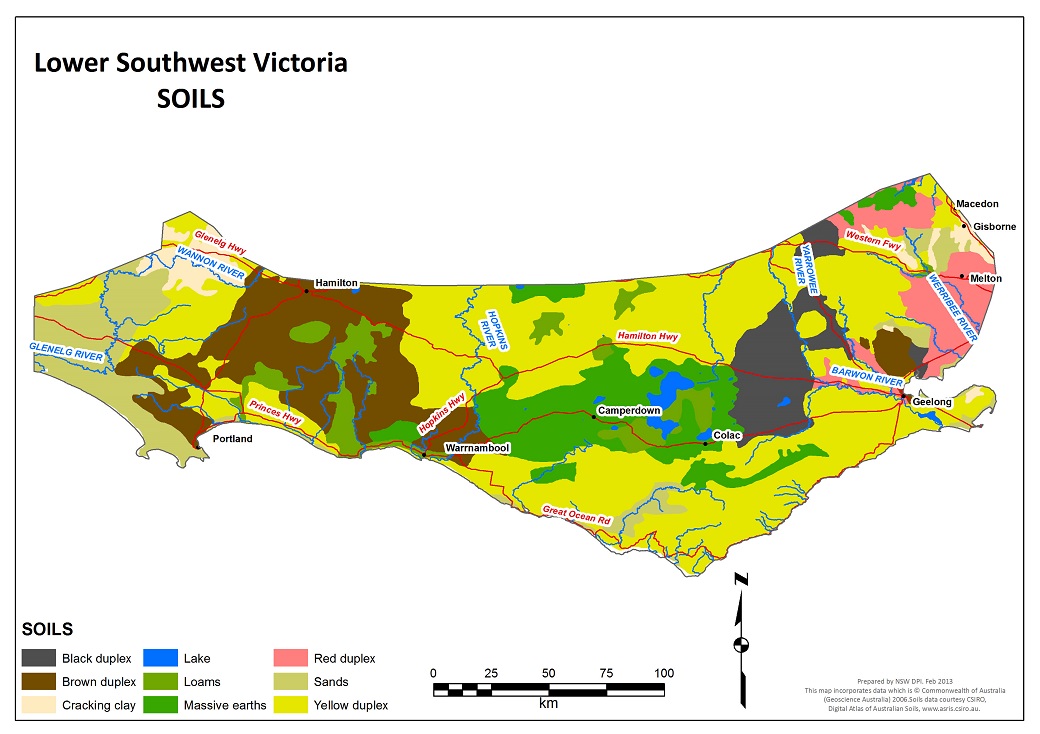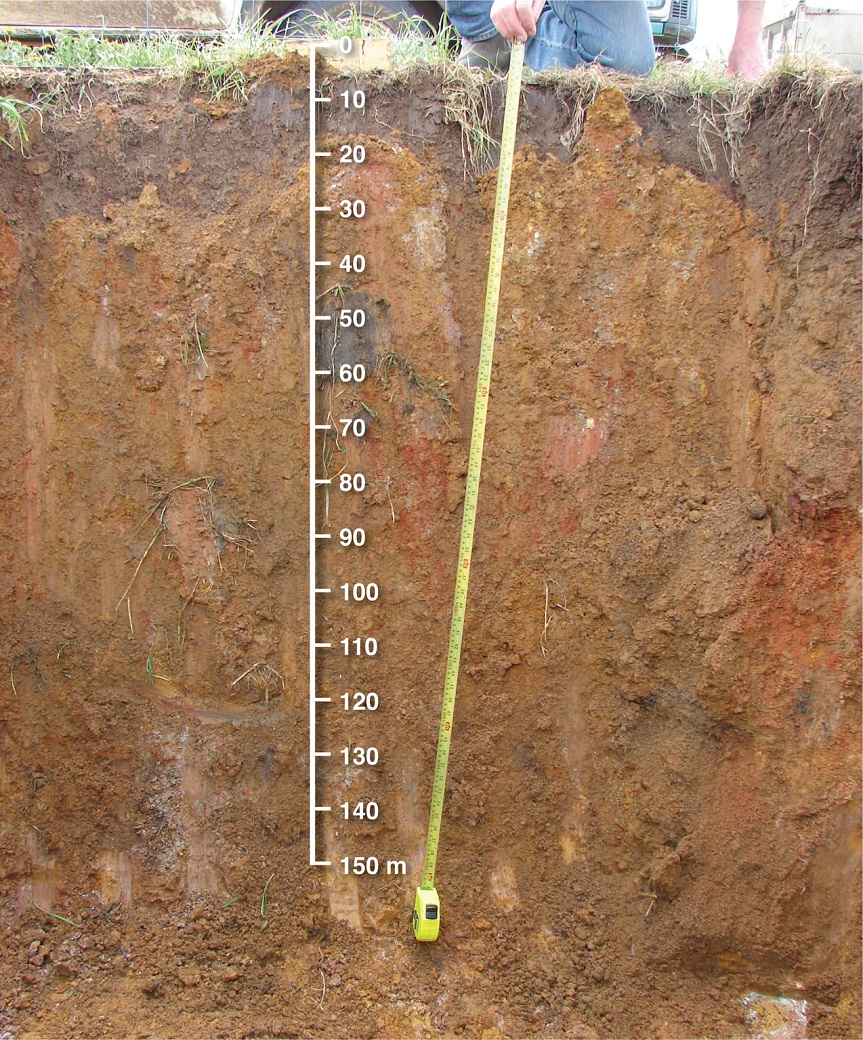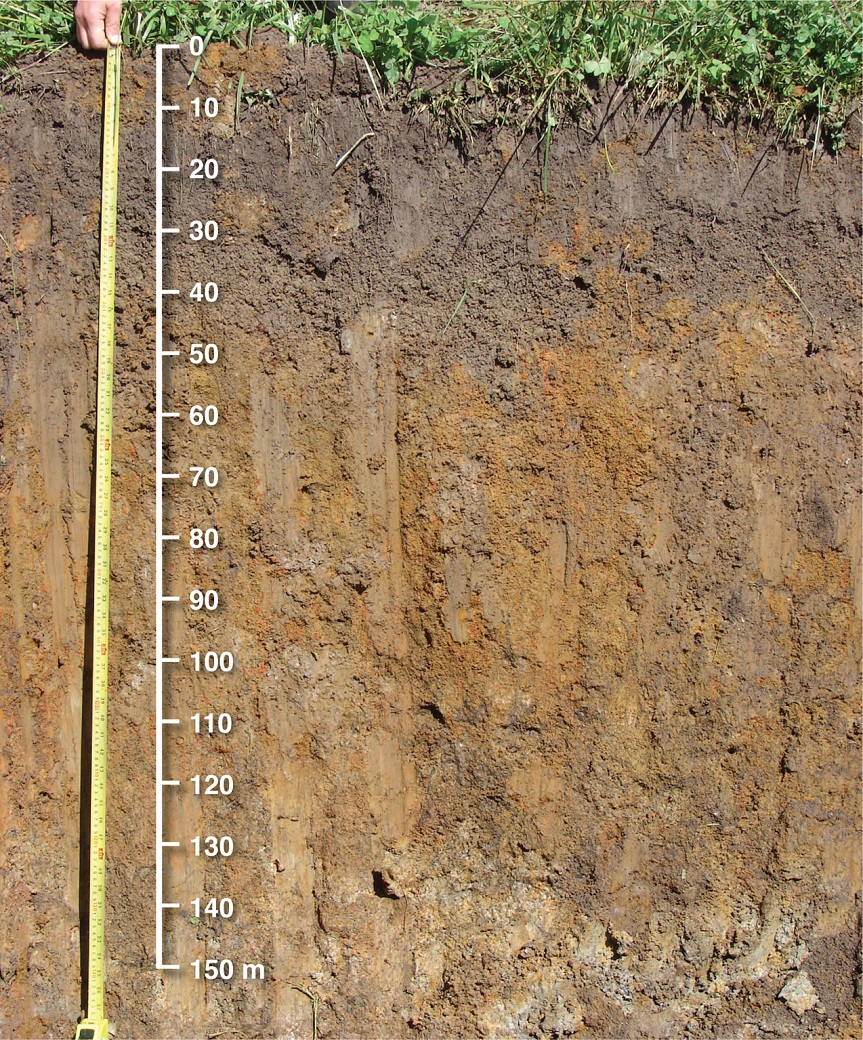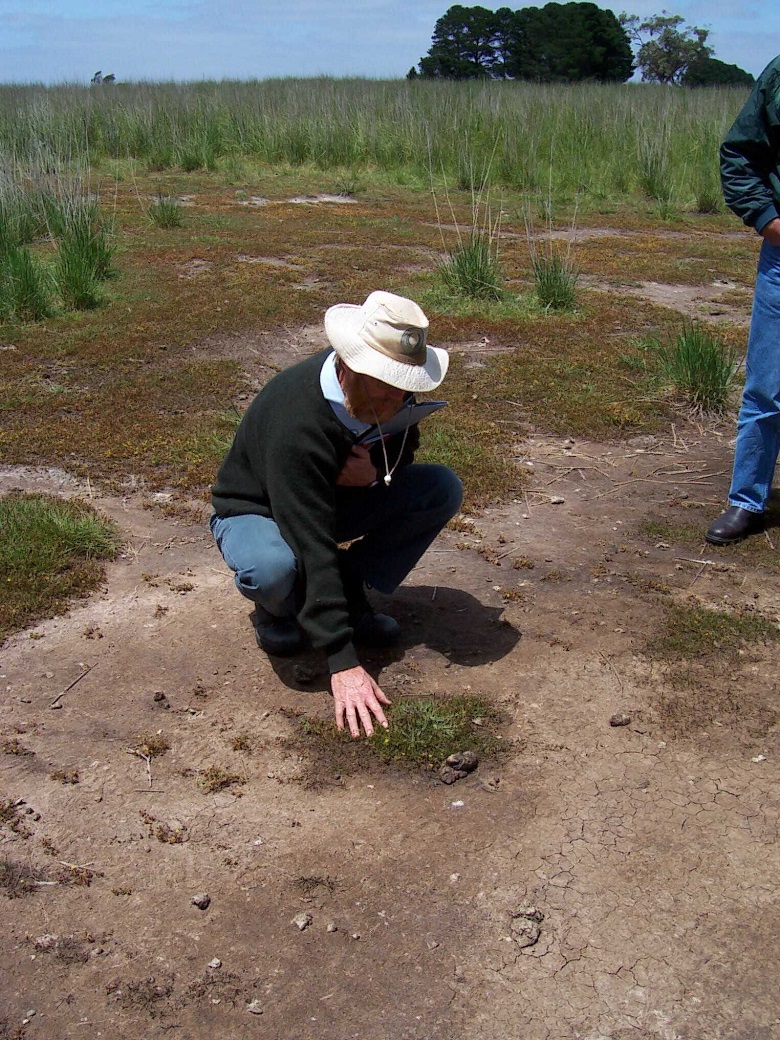South West Victoria (Lower) – Soils
Describing soils of South West Victoria
Soils in the Lower South West of Victoria (Figure 1) are variable and represent most of the orders within the Australian Soil Classification system. Soils are mainly duplex (Chromosols, Sodsols, Kurosols) with lighter texture surface soils overlying heavy clay subsoils which prevent drainage and cause winter waterlogging.
The soils at the Hamilton Proof Site are a brown duplex or Chromosol derived from basalt, and consist of sandy clay loam topsoil 15-20 cm deep overlying clay subsoils. These soils are typical of large areas of south-western Victoria from Geelong and the South Australian border.
There are also cracking clays (Vertosols) that are found on basalt plains and former swamps, which shrink and swell upon drying and wetting. Massive earths (Dermosols), which lack texture, contrast between the surface and subsoil are located in the stony rises around Lake Corangamite. There are also minor pockets of sandy soils (Podsols) and loams (Tenosols).

Click here for Australian Soils Classification map of lower south-west and their descriptions.
For more detailed maps of the Corangamite catchment soils go to http://www.ccma.vic.gov.au/soilhealth/outputs.htm
What does this mean for pastures?
The selection of pasture species to grow in this region will depend on climate, needs of the grazing system, farming objectives and the soil’s characteristics and constraints to production. Soil related constraints to pasture production in the lower south west include waterlogging, subsoil sodicity, soil acidity, salinity and declining fertility.
Drainage in duplex soils
Duplex soils tend to suffer from drainage issues due to having heavy textured clay subsoils which become saturated during winter and are prone to pugging. Phalaris and tall fescue have the highest waterlogging tolerance of sown pasture species (see managing wet soils).
In duplex soils, perennial species with the potential to develop large root systems should be rotationally grazed to maximise the ability of plant roots to grow into dense subsoils, improve access to deeper water, and increase the resilience of grazing systems.


Having the right plant in the right part of the landscape formed part of the research at the Hamilton EverGraze Proof Site. A soil survey of the Hamilton Proof Site recognised three landscape zones, which were termed “Crest”, “Slope”, and “Valley” and pasture species were matched to their soils and water-holding characteristics.
Crests are well drained, have gravely topsoils and slopes of 0-3%. Subsoil clays are typically yellow to red in colour, which indicates good internal drainage and aeration. Slopes are moderately well drained, averaging 6%. Valleys are subject to short term flooding by drainage from higher parts of the site for periods of up to a week during wet winters, and have slopes of 0-2%. Subsoil clays in both the Slope and Valley areas are typically yellow to pale grey, which indicates prolonged periods of waterlogging and poor aeration.
Subsoil sodicity
The subsoils of many Yellow Duplex soils (Sodsols) are also sodic (exchangeable sodium is 6% or greater). Sampling and testing the subsoil will identify sodicity and dispersion issues and whether the use of gypsum will help alleviate subsoil constraints to production.
Soil acidity
There are areas within the Lower South West region which have strongly acidic top soils (pHCaCl 4.5 to 5) which generally occur on lighter textured soils with high rainfall. These soils require applications of lime to establish pasture and to maintain production. The majority of soils are moderately acidic pHCaCl 5 to 5.5 and generally don’t require applications of lime unless lucerne is to be established and aluminium levels are higher than desirable. See Soil acidity monitoring tools for further information. The region’s soils generally become more alkaline with increasing soil depth but Kurosols with subsoil pH(CaCl) levels less than 5 may not be able to grow lucerne due to subsoil acidity.

Soil salinity
Saline land occurs throughout the lower south-west region resulting in poor pasture production and bare ground susceptible to erosion. See managing recharge and salinity for further information.
Soil phosphorus deficiencies
Most pastures grown in the region are typically responsive to phosphorous. Phosphorus (P) application in the region is quite low (9.8 kg P/grazed ha) which is reflected in the stocking rates of 16 DSE/ha for the average Livestock Farm Monitor Project (see Livestock Systems). Potassium and sulphur levels are more likely to be deficient on lighter textured soils and in high rainfall areas. Molybdenum deficiency, which impacts on clover’s ability to fix nitrogen, is found on strongly acidic soils. See the Hamilton Long Term Phosphate Experiment page for further information.
For further information on soil constraints see Regional Context Environment.
Further Information
- Agriculture Victoria soil fertility monitoring tools
- Agriculture Victoria soil acidity monitoring tools
- Manage recharge and salinity in south-west Victoria
- Manage wet soils in south-west Victoria
- Environmental issues in south-west Victoria
- Hamilton EverGraze Research – Right Plant Right Place Right Purpose Right Management
- Soils at the Hamilton EverGraze Proof Site

